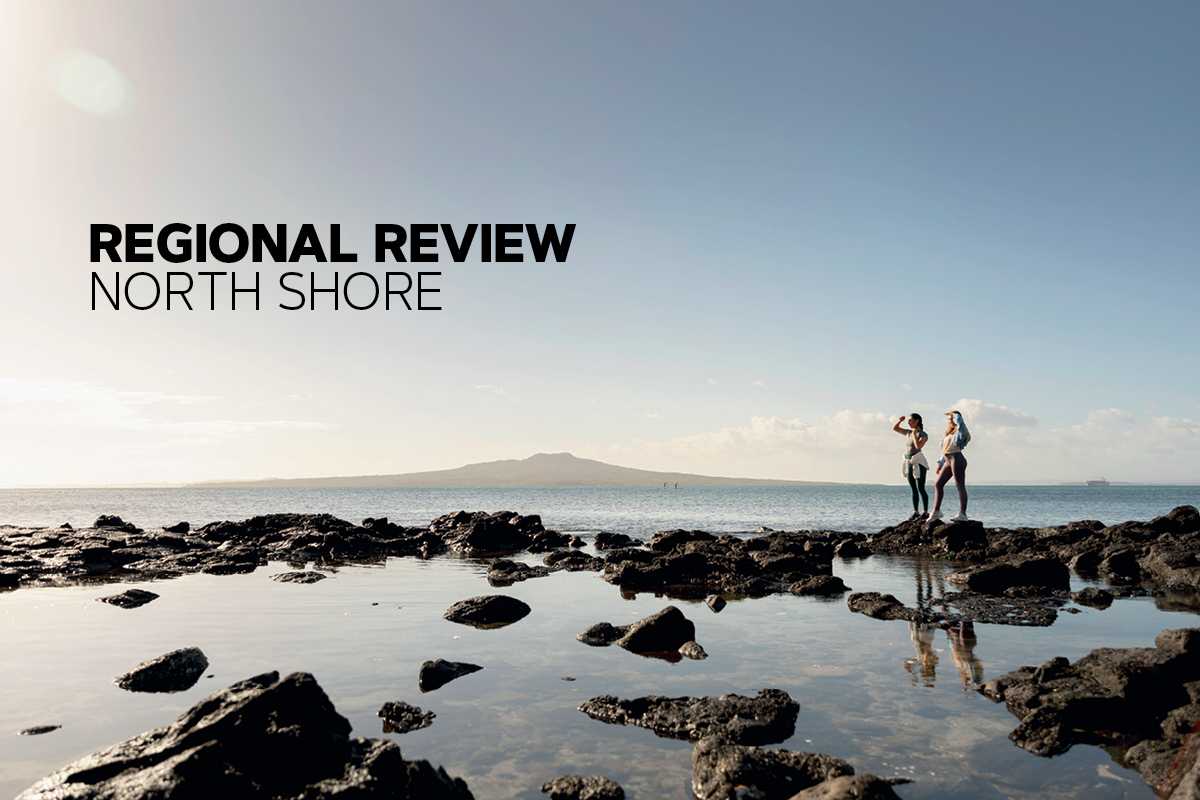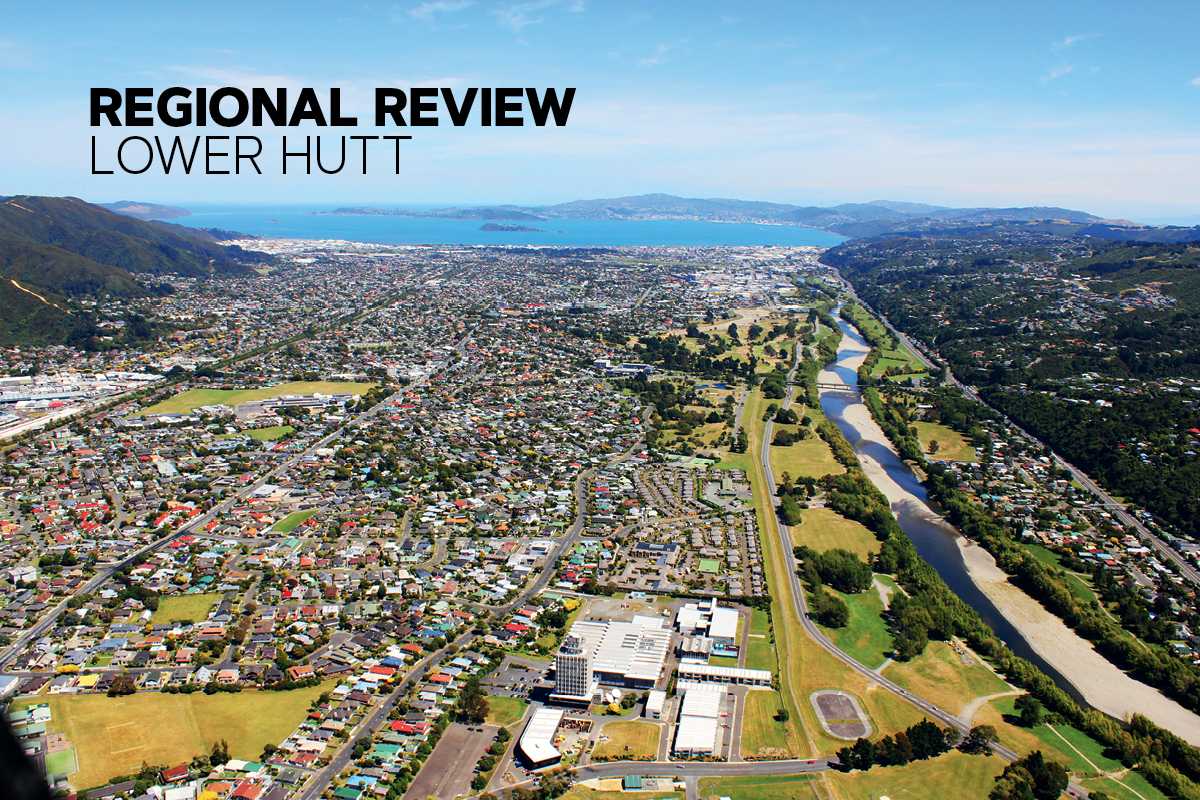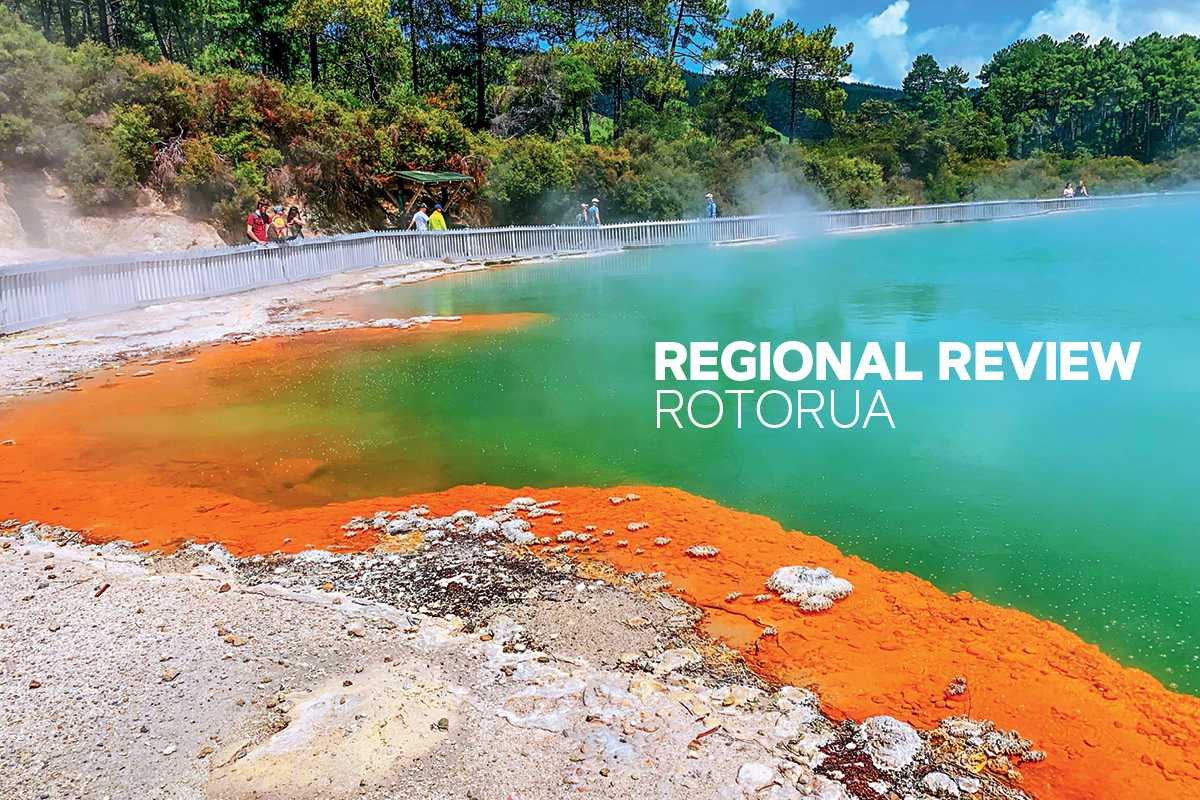
Clear Vision For The Steamy City
Surrounded by forests, 18 natural lakes and geothermal pools, Rotorua is a confident city with a strong plan for the future, Sally Lindsay writes.
30 November 2022
A number of projects are transforming the city as a desirable and sought-after place to live, work, do business and invest. Many of Rotorua’s major economic indicators point to ongoing growth, which is a sign it is doing things right.
Years ago the city’s name was combined with Las Vegas to create the nickname “Rotovegas” which has stuck, even though it delights and infuriates locals in equal measures. It is a none-too-subtle acknowledgement of its tourism and Maori entertainment industry which makes up a major part of the local economy. However, at its heart Rotorua is steeped in indigenous culture and the geothermal hot springs, although the smell can be a surprise to visitors.
Positioned just outside of the golden triangle of Auckland, Hamilton and Tauranga, Rotorua reaps many of the benefits of proximity but without the price tag. It has one of New Zealand’s most diverse economies, with businesses offering job opportunities across forestry and wood processing, tourism, geothermal, agribusiness,
education, health, manufacturing and social services.
The city is within three hours’ drive of 50 per cent of the country’s population. Nearby arterial trunk routes make it the hub for transport and commuters travelling north to Auckland and Hamilton, south to Taupo and Wellington, or just over the hill to Tauranga and Whakatane, helping the economy thrive.
A dynamic and culturally rich group of people call Rotorua home. More people are looking to the regions for affordable housing and a better lifestyle, and Rotorua is well placed to capitalise on that.
REASONABLE PRICES
There are triple the number of properties on the market than at the beginning of the year – about 400 compared to 175 at the end of last year.
Sales, however, have slowed and properties are staying on the market for an average of 20 extra days and sometimes longer.
REINZ data show 68 properties were sold in September, compared to 76 in the same month last year. The median property price across the city dropped by $15,000 between August and September to now sit at $660,000 but that price is up $10,000 on September last year.
Price gains have slowed markedly. Only three suburbs showed negligible price gains during the year to November 1 – Lynmore from $933,200 to $937,800, Ngongotaha 0.5 per cent from $702,300 to $705,550 and Glenholme 0.4 per cent from $709,100 to $711,800. Kawaha Point stayed the same, while Koutu
dropped 2.7 per cent, Owhata 2.5 per cent, Tihiotonga 2.2 per cent, Springfield 2.1 per cent, Fairy Springs 1.5 per cent and Holdens Bay 1.2 per cent, CoreLogic
figures show.
Callum Piesse, residential sales and marketing consultant at First National Rotorua, says there has been a constant supply of property and some of it is still 54 NZ selling fast. He sold a half commercial/half residential property for $200,000 in three days to a business operator. “It was different and is the exception,” but he has another residential property that needs a full renovation about to be snapped up and it has only been on the market for three weeks.
“In the main, though, buyers want fully renovated properties. They don’t want to put in the hard work, which if they did, would end in a substantial gain on what they paid upfront.”
Good properties priced from $400,000 to $550,000 in any Rotorua location attract buyers as do properties in the $1 million range, whereas houses in the $750,000 to $800,000 bracket are slower to sell, says Piesse. “People selling in the $550,000 range often step up to a $1 million property, but if they are selling in that range, and it’s a marriage split, for example, they might have to drop down to the $750,000 bracket.”
He says the market has quietened considerably and while there are a few first home buyers around, it is mainly people moving who are buying and particularly those in the $1 million price range.
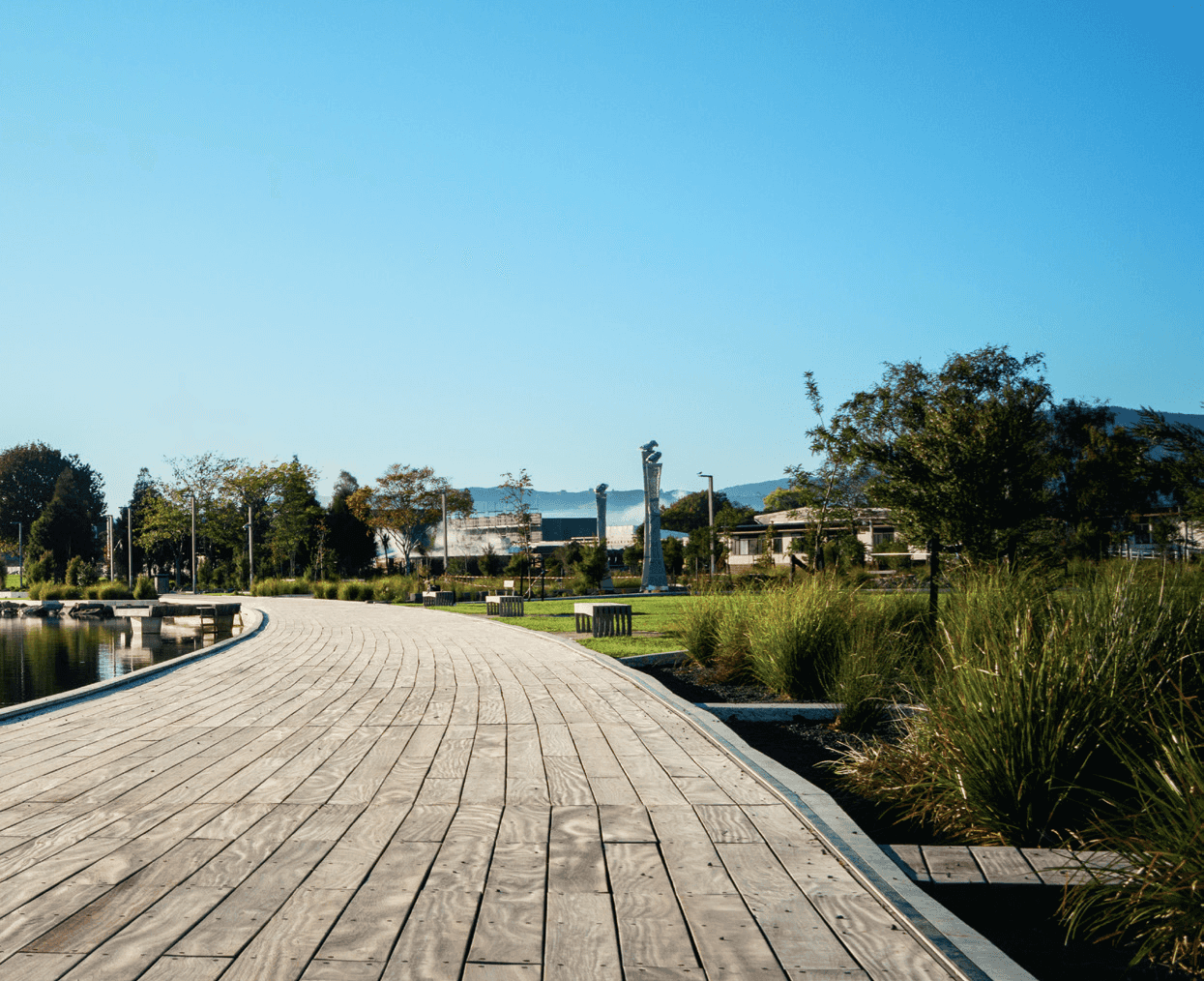
Rotorua sits within three hours’ drive of 50 per cent of NZ’s population.
INVESTORS BACK
According to Piesse there are more investors back in the market than three months ago. “Many believe this market cycle is heading to the bottom. “Investors can be split between those who might already have a portfolio and will buy properties needing renovation – or that can be extended to improve cashflow – and others, mainly out of- towners, who want a completely renovated property they can rent immediately, take any capital gains and sell later. Those investors adding value tend not to sell.”
iFindProperty Rotorua agent Kara Niles says every suburb has value-add properties but making a deal is not easy. It is taking three months on average to find a property an investor is happy to buy.
Clients go to her with a brief of what they want in areas where prices are reasonable. She won’t engage with investors who don’t have a realistic and achievable brief.
Niles has just completed one deal at $510,000 for a 1000m2 property where the buyer plans to add two extra dwellings if resource consent is granted and spend $20,000 on a renovation of the existing house. When just the renovation is completed rent for the property will rise to $570 a week. “That is a good buy because the property offers extra housing options, as well as subdivision,” says Niles.
She says this sort of deal is mainly what investors look for. “Although new builds are on investors’ radars there are more risks because of rapidly rising construction costs, materials shortages and completion dates not being met for bank mortgages. Also, Rotorua has not had the same level of new development projects as other larger cities, so [has] fewer new properties for sale.”
A big winner for investors are the better yields for existing properties compared to new – an 8 per cent yield is still achievable on an existing property.
About 10 per cent of investors are from Auckland and a percentage from overseas. In the past investors could leverage off their family home to invest, but this has dried up as investors face higher tax bills, higher interest rates and increased costs. “Those who can buy are going to be in a good position when the market turns.”

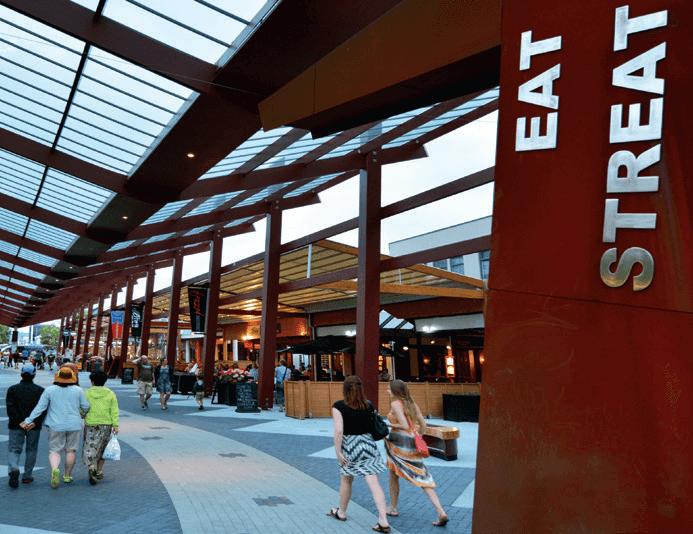

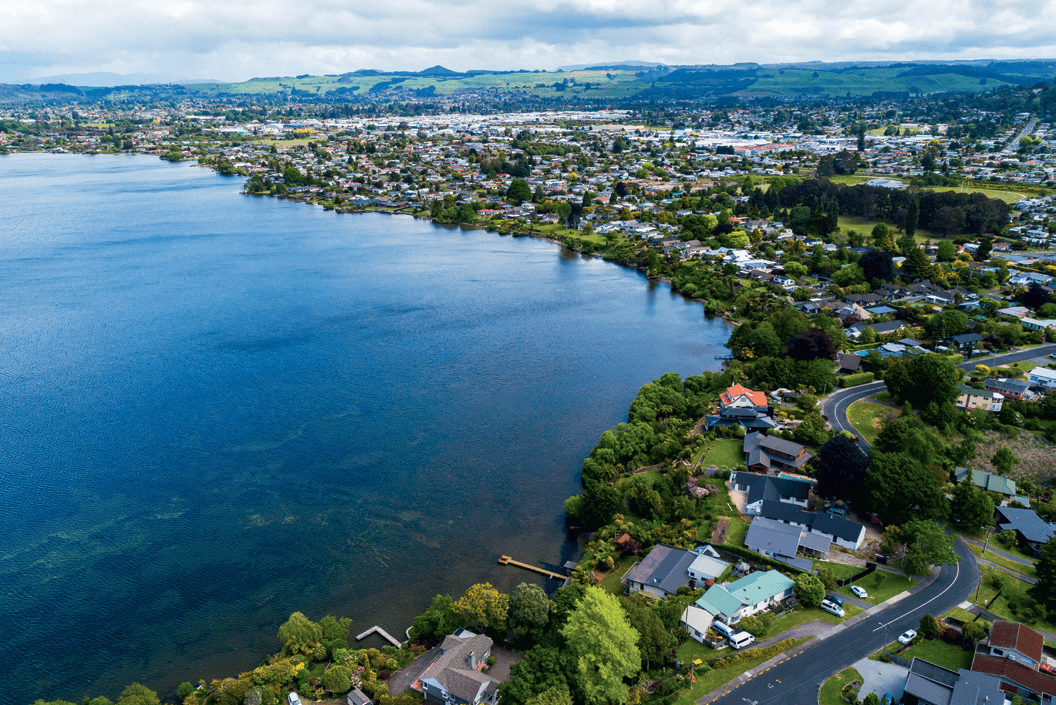
Lynmore, Springfield, Kawaha Point and Tihiotonga are the most popular suburbs for private rentals. Because of this they are often difficult to get into.
EDUCATING VENDORS
Three-bedroom houses are the most popular for any buyers, particularly in the cheaper areas of Rotorua.
Piesse says while some buyers might believe the bottom of the cycle is near it is too hard to tell and it is anybody’s guess how it will perform. “Once inflation starts curving, we may see a return, but a return to what? The market can’t go back to where it was last year. Prices were insane.”
Piesse says some vendors still believe they can sell at those levels. “They have to be educated that prices have dropped considerably and it is better to get in front of the market now than continually having to catch up.
“My advice is to listen to the market and the real estate agent as they are working in the industry every day. A number of agents have already left the industry because they can’t have the hard conversations with vendors.”
‘Those who can buy are going to be in a good position when the market turns’ KARA NILES
DIFFERENT MARKET
Rotorua’s rental market is ticking along, says Precision Property Management director Carol de Farias, even though it’s well known social housing issues, and homeless living in central city motels, has made finding the right tenants difficult.
That is not to say social housing tenants are not accepted, says de Farias. “There are some people who do fit the good tenant criteria – they have just fallen on hard times and ended up in emergency housing.”
Precision Property Management has 240 houses on its rental book. Described as a boutique property management company, de Farias says Rotorua is faced
with an unfair share of undesirables, making life difficult for private landlords.
“Rotorua Lakes Council has integrated social housing into many suburbs near the city centre and it has brought myriad problems. Landlords are having to manage far more difficult behaviour from tenants in social housing complexes near their rentals. It has become far more prevalent since the pandemic and is getting worse.
“Recently a tenant in a rental we manage was subjected to constant screaming during many domestic violence outbreaks and a broken fence from a social housing tenant in a complex backing onto the landlord’s property.
“When this occurs, we have to contact the social housing provider and negotiate a way to bring their tenant’s behaviour under control. It’s a difficult part of the job, particularly when a good tenant doesn’t want to leave their private rental and the landlord is receiving decent rent.
“Now the council and government are starting to listen, and realise the issues were created by directing homeless and social housing tenants in big numbers to
Rotorua, the city will get some change.”
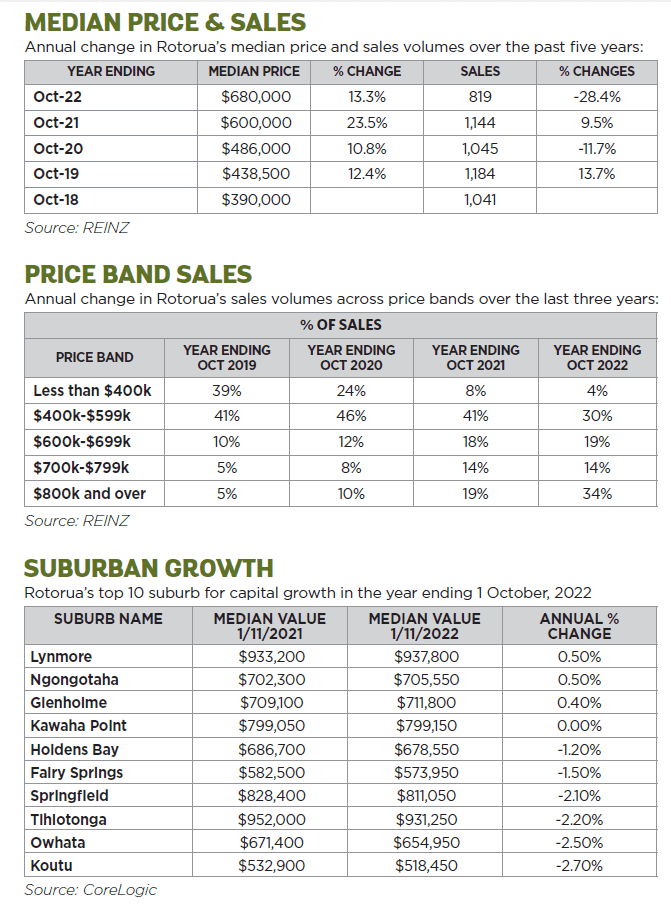
The most popular private rental areas, and often difficult to get into, are Lynmore, Springfield, Kawaha Point and Tihiotonga. “There is usually a scramble from renters when properties, particularly with garaging, do come up for rent,” says de Farias. Other popular areas for renters are Western Heights and Koutu. However, she says it is hard to define Rotorua’s best or worst suburbs as there are high end as well as poorer homes along most streets.
Rent for an average three-bedroom house is $550-$590 a week, while for a better house it starts from $650 a week. Rotorua is perceived as having cheaper rents than Tauranga and Taupo, but de Farias says they are getting up to similar levels as these areas.
Despite the issues, she says Rotorua has not lost much of its gloss for investors, especially experienced investors, who are still buying property, but mainly blocks of flats and multiple dwellings on one site rather than a single home on a section. “Those investors realise this market cycle won’t last and are buying while prices drop.”
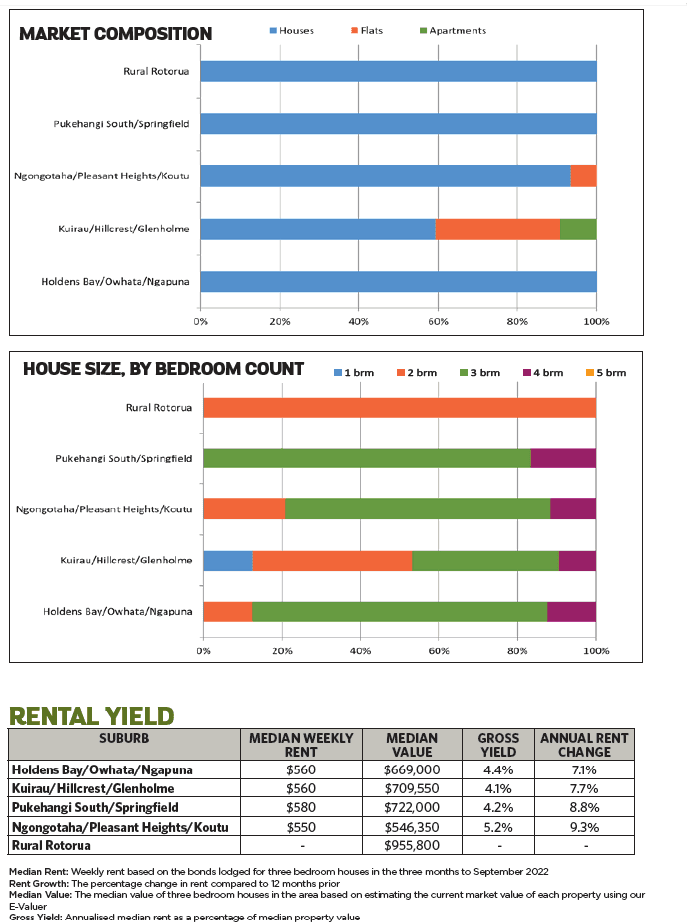
THE DATA
Rental data is sourced from the Ministry of Business, Innovation and Employment based on rental bonds lodged. This data is supplied to us grouped into geographic areas based on statistical area units used by Statistics NZ for the census and as a result do not always match well with common usage suburb names.
The rental data for each area is matched to property price information from our database to determine property prices and therefore yield. The yield is calculated as the annualised rental income divided by the median property value calculated using our E-Valuer.
MARKET COMPOSITION
The rental market in Rotorua is weighted towards houses, as tends to be the case in most parts of the country. Of the 390 properties recently available for rent, 315 have been houses (81%), with another 60 flats (15%), and 15 apartments (4%).
All of the apartments have been in Kuirau/Hillcrest/Glenholme, with that sub-market also having the bulk of the flats (51). Ngongotaha/Pleasant Heights/Koutu has had the other nine flats.
As such, 100% of the properties recently available for rent in each of the other three sub-markets in Rotorua have been houses, with the most properties (out of those areas) being 48 in Holdens Bay/Owhata/Ngapuna, followed by 36 in Pukehangi South/Springfield, and six in Rural Rotorua.
That said, more generally, the most houses recently for rent have still been in Ngongotaha/Pleasant Heights/Koutu (129) and Kuirau/Hillcrest/Glenholme (96).
HOUSE SIZE, BY BEDROOM COUNT
Looking specifically at houses (315 properties), 60% recently for rent have had three bedrooms (189), with another 25% in the two-bedroom bracket and 11% with three. Another 4% have had one bedroom, but none with five. All of those one bedroom houses for rent have been in Kuirau/Hillcrest/Glenholme.
Meanwhile, for the two-bedroom houses, the most (39) have been in Kuirau/Hillcrest/Glenholme, followed by 27 in Ngongotaha/Pleasant Heights/Koutu. There have been smaller numbers in Holdens Bay/Owhata/Ngapuna and Rural Rotorua, although in the latter, two bedroom properties have accounted for 100% of the houses recently available for rent.
The four-bedroom houses recently available for rent have been spread fairly evenly across Rotorua, except for the Rural area. So that just leaves the three-bedroom house bracket, and there the most properties recently for rent have been in Ngongotaha/PleasantHeights/Koutu (87), with the highest concentration rates in Pukehangi South/Springfield (83%) and Holdens Bay/Owhata/Ngapuna (75%).
RENT AND YIELD
By matching average value to rent we can look at gross yield for three-bedroom houses in each area.
Median weekly rents for three-bedroom houses in Rotorua range from $550 in Ngongotaha/Pleasant Heights/Koutu up to $580 in Pukehangi South/Springfield. However, there’s a much wider variation in the median value for these properties, from less than $550,000 in Ngongotaha/Pleasant Heights/Koutu up to more than
$950,000 in Rural Rotorua.
Hence, gross rental yields on three-bedroom houses also differ quite significantly depending on which part of Rotorua you look at – from 4.1 per cent in Kuirau/Hillcrest/Glenholme (which in fact is still pretty attractive compared to other parts of the country) up to 5.2 per cent in Ngongotaha/Pleasant Heights/Koutu.
The appeal of some parts of Rotorua from an investment perspective is probably bolstered by solid rental growth lately, in the range of 7-9 per cent annually across each sub-market.
